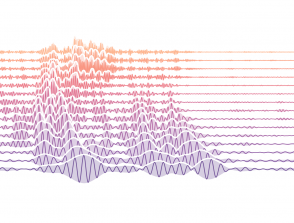Tomographie de l’Océan Indien par inversion de forme d’onde
Start: 02 October 2016
End: 08 July 2020
Supervisors :
Jean-Paul Montagner
Related teams :
Seismology, Sismologie
Status: Defended
The arrival of some plumes and the birth of hotspots at the Earth surface is more likely the cause of the break up of the Pangea ~200 Ma ago, during the jurassic era. The Gondwana was formed by many continental masses like Africa, Australia, India and Antarctic. The late cretaceous was affected by a biological crisis caused by a volcanic and/or asteroid cataclysm which provoke the disappearance of 90% of life on the Earth including dinosaurs, and produced India Deccan trapps with an area of 2 millions km^2 and thickness of 2.5-3 km. This volcanic disaster was associated with the birth of la Réunion hotspot ~65 Ma years ago, from there the india plate entered into the northward migration with a velocity of about 18-20 cm/year, and the closure of the Tethys ocean in front of the indian plate started; in the meantime the raising of basaltic lava from the indian ridges formed a new ocean floor behind the indian plate: this was the birth of indian ocean. In 1953 the Canadian researcher Tuzo Wilson suggested that such an intra-plate volcano may be due to a fixed hotspot in the mantle capable to create successive volcano on the surface; later in 1971 Jason Morgan suggested that the hotspot is fed by a mantle plume rising from the core-mantle boundary due to thermal instabilies. The goal of this thesis is to investigate the actual state of the plume in the entire indian ocean, responsible of many volcanic islands such as Maldives, Maurice and Réunion. By applying waveform inversion we are able to image the earth structure down to the lower mantle; we use Rhum-Rum data and also data collected from FDSN (Federation of Digital Seismograph Networks) data center to perfom our inversion. We perform the forward modelling with the spectral element method. For this regional case we use RegSEM (regional spectral element method) to compute synthetic seismograms that were compared to real seismograms later on. We divided the waveform into several wavepackets, each wavepacket corresponds to a specific mode. We inverted for two parameters, isotropic velocity and radial anisotropy.The result shows a large velocity anomaly channel extending from East to West over nearly ~2100 km in the Mascarene basin at a depth of 200 km. Our model also bring to light a plume under the Reunion hotspot with a broad head in the upper mantle and a narrow tail anchored in the lower mantle. Our model sheds light on the connection between the Reunion plume and the South African LLSVP (Large Low Shear Velocity Province), as well as between the Mascarene anomaly and the base of the lower mantle.






